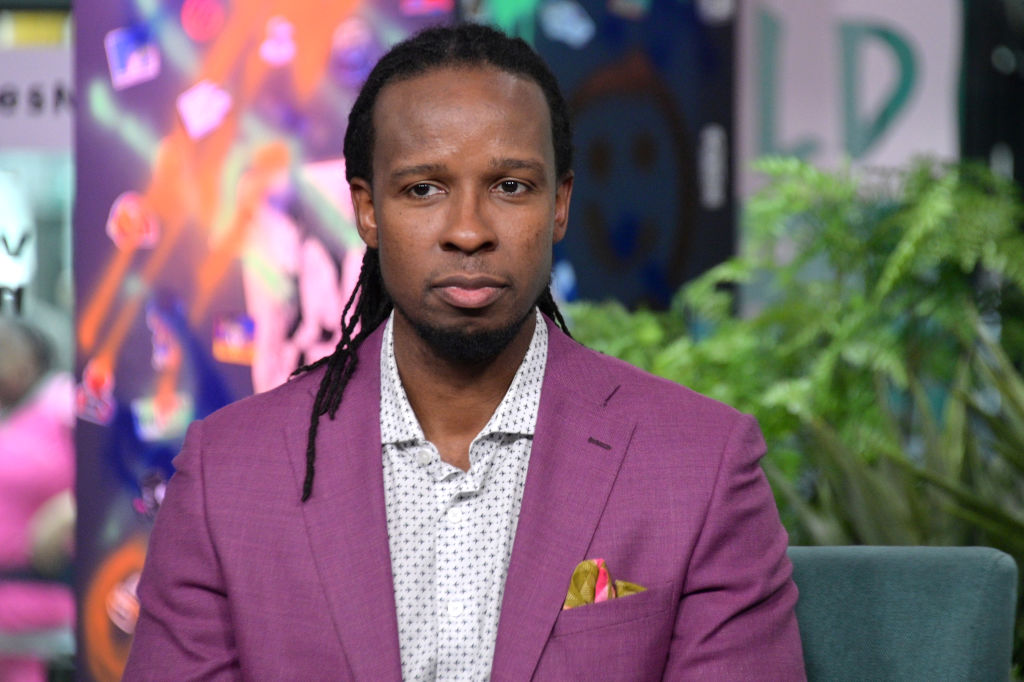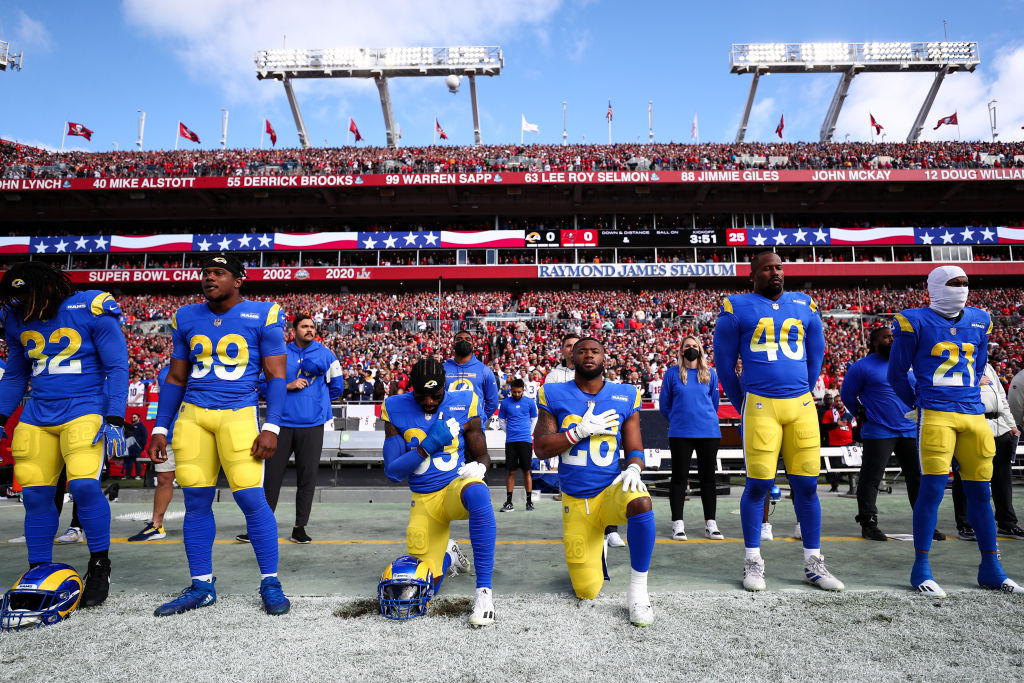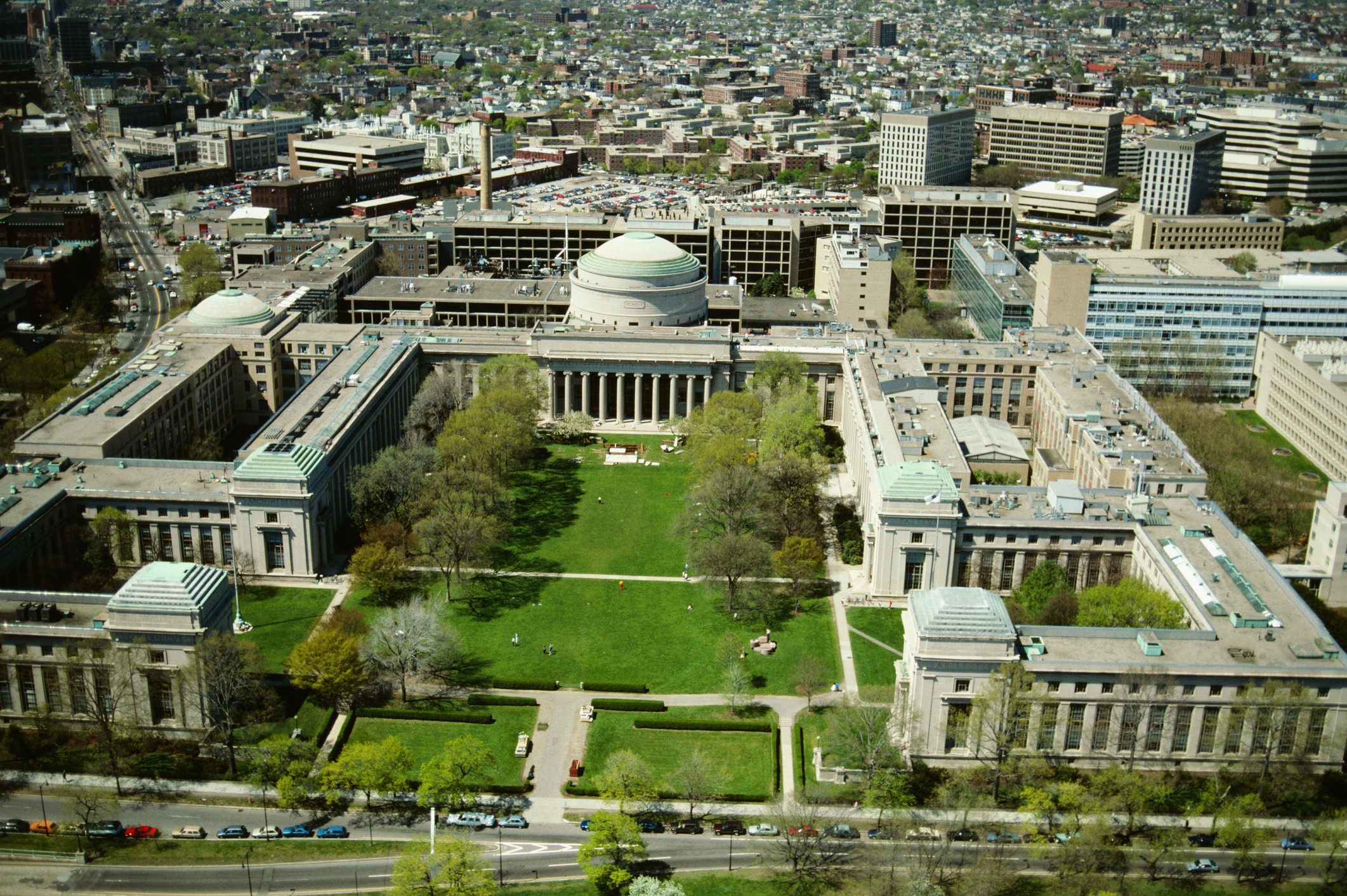The divisive racialist creed doesn’t add up.
Kendi’s Fallacy and Its Consequences

Are humans really all the same?
Human beings are not all the same. People vary by height, hair color, skin tone, sex, and along any other dimension you care to measure: strength, size, beauty, cognitive abilities—such as intelligence and verbal and mathematical ability—musical ability and so on. From a biological point of view, this variation is positive and contributes to humans’ ability to survive in a wide variety of environments.
These individual differences are often also correlated. Sometimes this is a problem, sometimes not. For example, on average short people tend to have lower IQs than tall people. Nobody really knows why this is the case, nor has it caused any social problems—“tall” and “short” people don’t usually identify themselves by their height so the average IQ difference goes unremarked. On the other hand, as demonstrated by Charles Murray, skin color and IQ are also correlated: people who are black tend to have lower IQs than whites or Asians. That might not be a problem either except that IQ is also correlated with some significant outcomes like wealth and health. Causality is always difficult to determine, but there is no doubt that high-IQ individuals tend to be richer and higher-status than the not so smart. What’s even less clear is whether differences like this are the cause of black-white social disparities.
One would suppose that the difference in average social status between whites and Asians compared to blacks would have generated research that could provide other explanations for this phenomenon. For example, in addition to IQ differences, differences in childhood environment, education, culture, and biology, etc. Perhaps some talents are complementary: are people bad at math and logic better at art, writing, or speaking, for example? Did Oscar Peterson have a high IQ? Who cares, he was a brilliant musician. There are many possibilities, most unexplored.
Ibram X. Kendi, the celebrated author of How to Be an Antiracist, is interested in none of these questions, because he has a single answer to all of them: Racism is the cause of all black-white disparities…
An antiracist idea is any idea that suggests the racial groups are equals in all their apparent differences—that there is nothing right or wrong with any racial group. Antiracist ideas argue that racist policies are the cause of racial inequities.
Kendi’s whole thesis rests on an assumption that most people would agree with but is obviously wrong scientifically. Most would agree that “there is nothing right or wrong” in a moral sense with any racial group. All are, to use an older phrase, “Children of God” and have equal legal rights and equal moral standing. But moral equality does not translate into equality in other dimensions such as ability, cultural background, interests, or other traits that influence one’s prospect of success. Kendi’s claim that all individuals, hence all groups, are equal in these characteristics is an untruth.
Why advocate an obvious falsehood? Kendi explains that if all groups are really the same, any differences we can observe—e.g., wealth, health, incarceration rate, etc.—must be due to “racist policies.”
By advocating the fallacy that all groups are the same as far as interests, abilities, culture, etc., Kendi is able to justify an equality-of-outcomes, crypto-Marxist agenda that would otherwise be rejected as both destructive and unjust.
Yet How to Be an Antiracist has been hugely successful. The reason is that once readers have been induced to abandon both facts and logic, the field is open to persuasive rhetoric, of which the book has an ample supply.
HBA is tough to analyze, though some, such as D.M. Schwartz, have done admirable jobs at doing so. The book affects stylistic oddities which sometimes make it difficult to extract the message. What’s with the body business, with its hint of slavery? It is never black people who are suffering, but “Black bodies”; it is not white people in an arena but “thousands of White bodies.” As he claims, “the White body defines the American body.” In like measure, Kendi enjoys the use of “spaces” as opposed to any other location-based noun. For instance, “after Brown, the integrated White space came to define the ideal integrated space where inferior non-White bodies could be developed.”
Besides these strange uses of terms, the difficulty in analyzing Kendi’s thesis lies in its muddled argument—an odd mixture of sentimentality, tautology, and self-contradiction. It is also an engaging mix of autobiographical anecdotes, on the one hand, and weighty pronunciamientos on the other. The anecdotes keep you reading. Chapters begin with a story that is interrupted by a long ideological digression which you must get through to reach the denouement at chapter’s end.
HBA has 18 chapters, ranging from Definitions, through Dueling consciousness, Power, Biology, Ethnicity, Body, Culture, Behavior, Color, White, Black, Class, Space, Gender, Sexuality, Failure, Success. The last chapter, Survival, is a moving account of Kendi and his wife’s ultimately successful battles with cancer.
The book begins in a way that has become fashionable for antiracists, with a confession. Kendi bemoans his early infatuation with the self-improvement messages of black icons MLK and W.E.B. Du Bois when he gave a speech to his high school: “I REMEMBER THE MLK competition so fondly. But when I recall the racist speech I gave, I flush with shame.” The “racist speech” young Kendi delivered criticized black culture: “[Blacks] think it’s okay not to think,” and “[Blacks] think it’s okay to climb the high tree of pregnancy!” Kendi goes on to repent, admitting over and over again just how wrong he was to follow the colorblind self-improvement ideas of MLK and Du Bois. Finally, he celebrates how clear his mind has become since his anti-racist epiphany.
But if every racial difference is the result of racism, how does Kendi define this central term? Each chapter begins with a definition, usually for a type of racism and antiracism. Chapter 1 is typical:
RACIST: One who is supporting a racist policy through their actions or inaction or expressing a racist idea.
ANTIRACIST: One who is supporting an antiracist policy through their actions or expressing an antiracist idea.
Both these definitions are tautologies, definitions without any real meaning. Kendi could as well have written, “An exorcist is one who does exorcisms.” (What is an exorcism?) What else would a racist be but someone who does racist things? Why do empty claims deserve to head chapters? I have no idea, but they serve to set the ex-cathedra tone of the book.
So what are “racist policies” according to Kendi? This takes a bit of searching, and the result is not quite what you might expect. Kendi begins not by defining the term but by showing how to recognize a guilty party. He relies on the fact that people already have an idea of what racism is (even though he questions it later in the book). Diagnosing racism is like diagnosing alcoholism. Just as the first step toward addiction recovery is recognizing that you have a problem, “denial is the heartbeat of racism.” People know racism, like addiction, is bad and therefore deny it.
To understand racism the way Kendi does, one first has to accept a false dichotomy: Either racist policies or black ‘inferiority’ explains why white people are wealthier, healthier, and more powerful than black people today: “There is no neutrality in the racism struggle…One either believes problems are rooted in groups of people, or locates the roots of problems in power and policies.” Kendi concludes with a frequently repeated accusation: “neutrality is a mask for racism.” Always? Sometimes? How do you know?
Obviously, black-white wealth differences depend on several things: yes, racist policies but also behavioral and biological differences between groups. As shown by the work of Thomas Sowell, white-black disparities are not an “either-or” proposition, not entirely caused either by racism (“racist policies”) or biology (“Black inferiority”). Nevertheless, Kendi’s false dichotomy seems to have worked. Perhaps because decent people don’t want to be accused of racist framing, calling one race “inferior” to another, even though the real issue is about differences not positions in a moral hierarchy. Nevertheless, guilt-ridden whites have been scared into accepting the absurd premise that all racial groups are not just the same morally but identical in every other respect.
But how does Kendi’s view of neutrality square with the concept of “color blindness”? Does that at least qualify as antiracist? No. As Kendi and other race scholars argue, “the language of color blindness—like the language of ‘not racist’ is a mask to hide racism.” Again, Kendi offers nothing more than the absurd and socially destructive charge that neutrality is the same as racism without any proof.
The closest to a full definition of racism Kendi offers is:
a marriage of racist policies and racist ideas that produces and normalizes racial inequities. Okay, so what are racist policies and ideas? We have to define them separately to understand why they are married and why they interact so well together.
It looks as if we are about to get an actual definition. But no, here Kendi does what I have seen in other books in this tradition, he sidesteps. His next sentence is: “In fact, let’s take one step back and consider the definition of another important phrase: racial inequity.” So, still no definition of racism but here’s a new concept, “racial inequity,” which he defines as:
when two or more racial groups are not standing on approximately equal footing…An example of racial equity would be if there were relatively equitable percentages of all three racial groups living in owner-occupied homes…
So, “inequity” just means unequal results—disparity—on some value measure, no matter the cause.
To this end, Kendi defines “racist policy” as:
any measure that produces or sustains racial inequity between racial groups. An antiracist policy is any measure that produces or sustains racial equity between racial groups…There is no such thing as a nonracist or race-neutral policy. [emphases added]
This is a very strong claim: to Kendi it matters not whether a policy actually mentions race. If a policy coexists with any kind of statistical disparity, then it is a racist policy.
Kendi’s doctrine resembles the legal concept of disparate impact, which affirms that a policy that doesn’t mention race may nevertheless be illegal if it affects races differently. For example, tests like the SAT, on which blacks tend to do worse than whites, may not be used to choose between applicants for a job for which a good SAT score is unnecessary. But using SAT scores to filter college applicants is acceptable, because (at least in theory) a highish score is necessary for academic success. (Kendi’s SAT “barely cracked 1000,” which put him around the 50th percentile.) Unsurprisingly, he is not a fan of “objective” tests, claiming “the use of standardized tests to measure aptitude and intelligence is one of the most effective racist policies ever devised to degrade Black minds and legally exclude Black bodies.”
Disparate-impact law labels some racially neutral policies as racist, which poses its own problems. But Kendi’s definition is much broader, to the point of self-contradiction. For him, any and all policies that have disparate impact are racist. It is racist to call “standardized tests that produce racial inequities ‘race neutral.’” It is even racist to call “affirmative action policies that succeed in reducing racial inequities ‘race conscious’”—even though they are often explicitly race-conscious. Kendi goes on to affirm, yet again, that “there is no such thing as a nonracist or race-neutral policy.” Apparently, it is not the process that is racist but the outcome; equity rules.
Only after establishing all these premises, we finally get to the heart of Kendi’s Alice-in-Wonderland definition of racism:
A racist idea is any idea that suggests one racial group is inferior or superior to another racial group in any way. Racist ideas argue that the inferiorities and superiorities of racial groups explain racial inequities in society…. An antiracist idea is any idea that suggests the racial groups are equals in all their apparent differences—that there is nothing right or wrong with any racial group. Antiracist ideas argue that racist policies are the cause of racial inequities.
A very odd view but convenient. If all racial groups are identical, then any disparities, indeed any “apparent differences,” must be due to racist policies. Kendi is willing to accept that blacks are generally darker than whites but says nothing about other biological differences such as their susceptibility to sickle-cell anemia. People and hence groups are different. Many of these differences are irrelevant to social factors like wealth and criminality. Others are not. Regardless, Kendi has effectively urged America to rule out individual and group differences as the cause of essentially anything of social importance. Antiracism is based on a fallacy. Kendi’s position is a crypto-Marxist credo quia absurdum.
Assimilation, as proposed by black scholar W.E.B. Du Bois, is unacceptable to Kendi, who claims that “assimilationist ideas are racist ideas.” At the same time, he rejects the idea of biological race. If there are no biological races, why not assimilate, unify? But no “if we stop using racial categories, then we will not be able to identify racial inequity.” But if racial categories are abolished and if all races are the same in every respect, there should be no “inequity,” should there? This one is a puzzle.
Following socialist historian Howard Zinn, recommended for his “honest history of capitalism,” Kendi freely attributes evil motives. For instance, he claims that Henry the Navigator voyaged in order to create the transatlantic slave trade. But socialism is excused when it adopted segregationist programs “in order not to alienate racist White workers.” Slavery gets a frequent mention; unmentioned is its voluntary renunciation by white Europeans.
The bottom line is that despite the success of Professor Kendi’s book, its morality is questionable and its fundamental thesis is factually wrong. The book repeatedly claims that all racial groups are really the same. Not just morally and legally the same but the same in every dimension—history, culture, strength, beauty, talents, interests and abilities—which is nonsense but allows him to blame all existing differences on “racist policies.” Those policies must be identified and overturned, even if that means abolishing objective tests, strengthening affirmative action, and whatever other race-conscious, “antiracist” measures are necessary. At the same time, he resists calls for “assimilation,” suggesting that voluntary self-segregation is his preferred social arrangement. Or, to put it differently, “segregation with benefits,” since all disparities must be remedied. Reparations are never mentioned, but they don’t need to be. It is hard to imagine a scheme further from MLK’s “I Have a Dream” than Kendi’s “antiracism.”
Whiteness Is Evil
Robin DiAngelo’s White Fragility operates on similar premises and reaches similar conclusions to HBA. Her style resembles a novel, anecdotes in which white people are brought to understand their racist “whiteness.” All their feelings—which are concealed from science—are known to DiAngelo, as they are to any author.
The introduction, by distinguished black academic Michael Eric Dyson, echoes DiAngelo’s anti-white bias, stating that “whiteness is at once the means of dominance, the end to which dominance points, and the point of dominance, too, which, in its purest form, in its greatest fantasy, never ends.” Not crystal clear but sounds…racist?
What exactly is whiteness? Dyson continues, “true—it’s not a biologically heritable characteristic that has roots in physiological structures or in genes or chromosomes. But it is real, in the sense that societies and rights and goods and resources and privileges have been built on its foundation.” Okay, so we’re not talking about actual white skin, which is in fact “biologically heritable.” Like Kendi’s racism, DiAngelo’s whiteness is an unmeasurable, omnipresent, and sempiternal oppressor. Like Kendi’s racism, we are constantly reminded how bad it is. This quote is typical:
Whiteness repels gossip and voyeurism and instead demands dignity. Whites are rarely without these “protective pillows”…
From a scientific point of view, this is nonsense: one unmeasurable thing repels (how?) gossip and voyeurism (meaning what?) and demands dignity (how?). White people (“whiteness”) are slandered without evidence. It turns out that some white people are upset, which just proves their fragility, says DiAngelo. What a great strategy! First you slander people, then when they get upset you tell them that it proves you were right! This is the essence of White Fragility.
DiAngelo, who has been running what are euphemistically called “training sessions” for many years, has honed her persuasive methods so as to answer, or at least address, every objection. In effect, she says, “Does discussing race upset you? Why of course, my dear, you are white and fragile and just coming to grips with the inevitable racism that is part of whiteness. But if you just recognize it you will still be racist but you’ll feel better for acknowledging it.” The book is full of novelistic interactions in which DiAngelo persuades her listeners first of a “whiteness” that goes beyond skin color and inevitably leads to the racism that is attached to it.
DiAngelo’s commitment to identity politics is front and center. She begins, as such books usually begin, by recounting the horrible things that white Americans did to native peoples, how they racially discriminated and delayed female suffrage, and how white men were always the ones in power. All irrelevant to conditions now but it starts the guilt process and lets us know that white men always misbehave. Like Kendi, she self-flagellates, admitting that she herself was, and is, guilty of all those sins—yes sins. As a result. the book is an incredibly annoying, not to say offensive, combination of sermonizing and therapeutic indoctrination. One reviewer called it “a barrage of psychological manipulation techniques.”
Throughout the book, DiAngelo uses a storytelling rhetorical method that seems to be accepted in the educational community. See, for example, how teachers are taught that elementary math is a “Struggle for Justice” via creative analysis of video clips of a couple of black kids trying to solve a problem. Every comment by the teacher is interpreted in a racialized way, and the speaker repeatedly reminds her audience that math is dominated by whites and Asians. Any teacher’s reasonable comments of a misbehaving student are “positioning” the student as a “troublemaker,” contributing “to the perpetuation of marginalization and oppression.” None of this storytelling refers to anything factual or that could be verified by the methods of science. But its effect on the audience is undeniable.
DiAngelo condemns a straw man version of what she calls “individualism.” Racial group membership is all that matters. For example,
Individualism is a story line that creates, communicates, reproduces, and reinforces the concept that each of us is a unique individual and that our group memberships, such as race, class, or gender, are irrelevant to our opportunities.
Like Kendi’s thesis, this is a false dichotomy. It’s either group membership or the individual, even though in reality it is really both.
The whole book could be summarized as the emotional companion to Kendi’s more academic—though I use that term loosely—work. It is racist propaganda that relies on the good will of white audiences who feel guilty for what other whites have done in the past (never mind the guilt of other races, much less the good that whites have done). DiAngelo uses that guilt to persuade them that their intentions are irrelevant. Even if they have not acted in racist ways, their very existence as white people make them complicit in everything that went before. If they will just admit this guilt they can be at least partially absolved. But the guilt of the white race must remain. It is a load white people must carry for the rest of their lives. It is sin with no possibility of redemption.
Treating people as individuals is wrong she says; group membership—meaning membership defined by immutable characteristics—is all that matters. All fault lies with whites. Intention is irrelevant. When a black woman is upset by an interaction with a white, the fault is always on the white side; it’s the white person who must readjust. There is no obligation on the part of blacks. This is demeaning to both parties as it paints whites as permanently guilty and blacks always as helpless victims. White Fragility is a dishonest, divisive, and destructive book.
***
White Fragility and How to Be an Antiracist both abandon elementary logic in favor of emotional brainwashing. The styles are a bit different: WF is loaded with psychological and quasi-religious references while HBA simply appeals to racial guilt and white people’s distress at the idea of comparing races in any way. Both agree in dismissing “objective” tests or really any idea of objectivity at all. Kendi quotes approvingly a teacher who says, “it is impossible to be objective.” When he asks for an alternative, she says “just tell the truth.” (Well, that’s settled then!) DiAngelo seems to agree, claiming that we are deluded to believe we can be objective. Both seek to divide the races rather than unite them, Kendi explicitly with his attack on assimilation, DiAngelo by implication when she insists on the permanence of “whiteness.” “White identity is inherently racist.”
The great mystery is why these books, one logically flawed and the other a mass of unprovable allegations against white people, have been so successful. The main reason is probably the basic decency of Americans. They may get upset at DiAngelo’s anti-white accusations, but in the end, they are willing to see things her way and admit to being if not the bad guy (that would be “individualist,” hence verboten) at least a recipient of unearned privilege. As for Kendi, well he is black so deserves some slack. Sure, his racism-antiracism dichotomy doesn’t make much sense but, well, I as a white person have inherited the benefits of slavery and so on, so I better listen!
Yes, do listen—to reason! These books are intellectually flawed and morally questionable. Don’t be fooled. The data shows that race relations were enormously improving until about ten years ago when the likes of Kendi and DiAngelo saw their voters defecting and decided to mount a counterattack. It’s time to return to common sense colorblindness—of course you “see” color, you just don’t pre-judge—and yes, individualism. Try to judge each person on what they do rather than how they look. It’s not rocket science.
The American Mind presents a range of perspectives. Views are writers’ own and do not necessarily represent those of The Claremont Institute.
The American Mind is a publication of the Claremont Institute, a non-profit 501(c)(3) organization, dedicated to restoring the principles of the American Founding to their rightful, preeminent authority in our national life. Interested in supporting our work? Gifts to the Claremont Institute are tax-deductible.
Officer selection and training cannot be placed at the service of the diversity regime.
Our emotional involvement in remote tragedies is exhausting and pointless.
Our “news media” tell us when to care about racial representation.
Administrators at Texas A&M try to bury their woke hiring agenda.
MIT, caught in a bind, reintroduces standardized testing.






